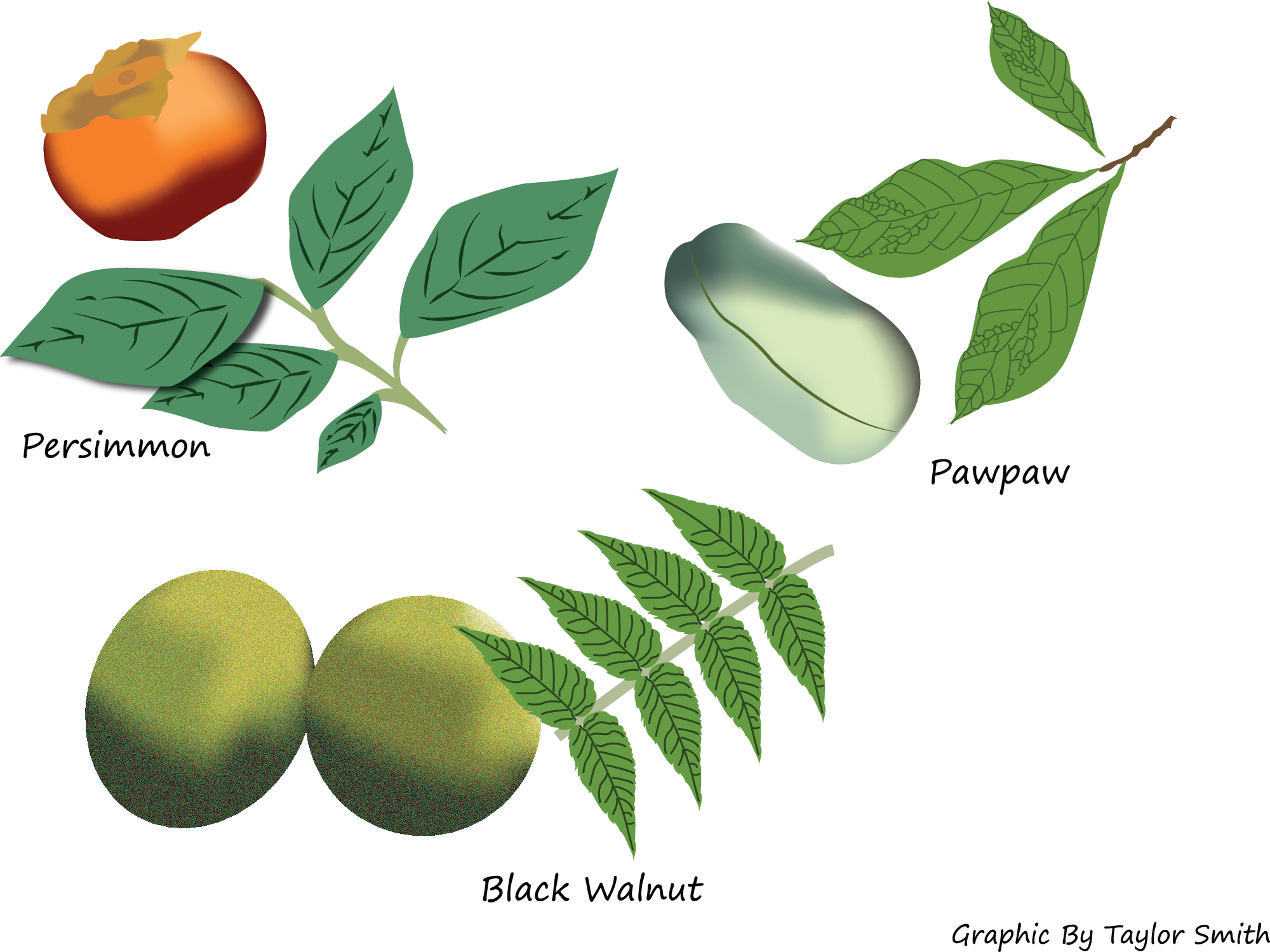By Taylor Smith
taysmith@lc.edu
The practice of foraging is a once-lost art that has gained traction in recent years. Whether it is considered a trend or not, the factors of the pandemic, inflation, and stagnant wages have made the art of foraging an interesting hobby. It has also made foraging a necessity for many people worldwide. Of course, there is the assumption that to be able to forage you must wander deep into the woods to search high and low for small amounts of food. This is untrue, to a point. Yes, you do have to search, and yes, you may have to go into slightly less urban areas. However, there is an abundance of food and medicinals to be found. Really, the only thing that may change what you search for will depend on the season as well as the region you find yourself in. When it comes to foraging in the Midwest, there are three native crops that come to mind.
First is pawpaw fruit. The pawpaw is a native fruiting tree common on the Missouri side of the Mississippi River. It is a soft fruit with large black seeds, that tastes like banana-flavored candy. Pawpaws grow on shrubs and small trees. These trees have slender trunks, with toothless leaves that can measure from 6-12 inches long and have a width of about 5-6 inches at the widest point. Papaws have a relatively short harvest season, lasting mostly from late September to mid-October. To properly harvest these fruits, you can shake the tree and collect any of the fruits that fall to the ground. The pawpaw is most commonly eaten raw, however, there are recipes available online with instructions on how to make jam and pudding out of the fruits. They can be found all over the St. Louis area, with the best place to look being Forest Park.
Much like the pawpaw, persimmons are another fruit native to the St. Louis area, that grows in abundance in some areas of the city. These scarlet-colored fruits have a tomato-like appearance; however, you should be careful to only eat the ripe ones raw. Unripe fruits, when eaten raw, have an astringent or incredibly sour property. Persimmon trees often grow in groves, in various conditions. The leaves grow from alternating branches, are about 2-6 inches long and 1-2 inches wide, and have a shiny pale green color to the upper surface as well as a leathery or hairy texture. Persimmons are ripe when they leave the branch without much intervention. Ripe fruits have a flavor profile similar to a plum. However, both ripe and unripe specimens can be dried or used in breads, cookies, and other baked goods.
Black walnuts are another very popular fall forageable. In fact, there is a black walnut tree just outside Trimpe! If you take the exit farthest from the student parking lot and look towards the Reid building, just a little past the cobblestone wall on the hill you may notice a tree with a slim trunk and graying bark with vertical grooves. In the fall months from September to November, you may occasionally notice green, golf ball or tennis ball sized fruits on the ground. These are the black walnuts! To process them, you must peel away the inedible fruit and set them out to dry. These walnuts are a native plant that is great in a variety of dishes, from salads all the way to baked goods!
In many areas, there is an abundance of fruits and vegetables available for free all year round—if you know what to look for. Foraging is not just a hobby, but a way of life that has allowed many people to survive for thousands of years. From wild garlic in the spring and summer to pawpaw fruits in the fall, the Metro East area offers a variety of native edibles to enjoy throughout the year.




